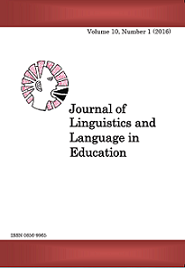The Formation and Syntax of Contractions in Kiswahili with Special Emphasis on Noun-possessive Combination
Abstract
Kiswahili contractions may be formed in various ways with a free-standing content word, a number figure or different word combinations with varying reducing degrees, sometimes becoming monosyllabic, with only a vowel or vowel-consonant combination. Most contractions are attached to host words to form permissible combinations. These attachments exhibit behaviour that implies that they are joined to the preceding or succeeding form in the lexicon, as affixes do (e.g. -yo from yako ' your/yours ' is joined to baba ' father ' to form babayo ' your father ' ). Paradoxically, though, they behave syntactically like a group of clitics, created from two distinct constituents. This paper examines the behaviour of Kiswahili possessives in combining with nouns to form contractions. It looks at how Kiswahili speakers decide on choosing the appropriate combinatorial partners to form an appropriate and permissible contraction. Drawing on morphosyntactic cliticisation approach, the paper also examines the syntax of Kiswahili contractions.
Keywords: Kiswahili contractions, noun-possessive combination, syntax
Downloads
Published
Issue
Section
License
Copyright © by Department of Foreign Languages and Linguistics, University of Dar es Salaam
All rights reserved. No part of this publication may be reproduced or transmitted in any form or by any means, electronic or mechanical, including photocopying, recording, or any information storage or retrieval system, without permission in writing from the publisher, except for short extracts in fair dealing, for research or private study, critical scholarly review or discourse with an acknowledgement.


